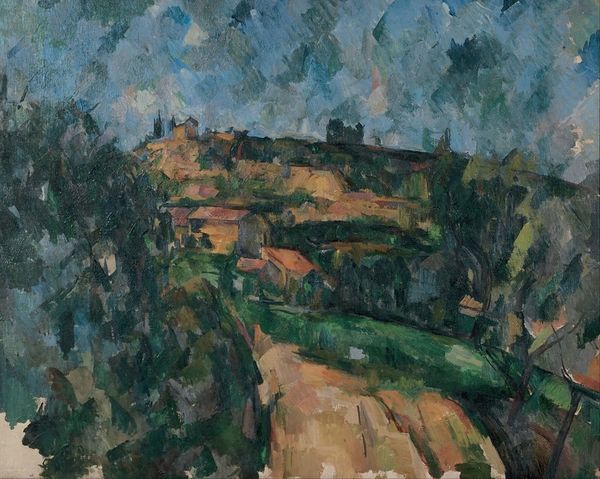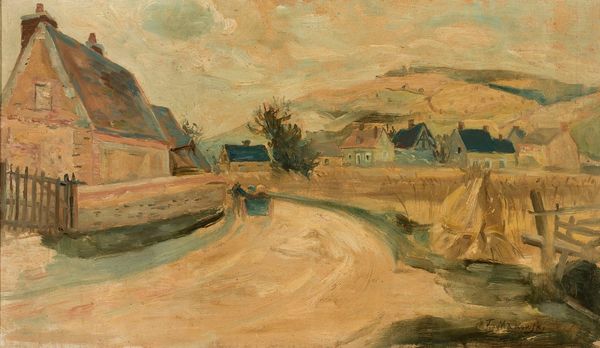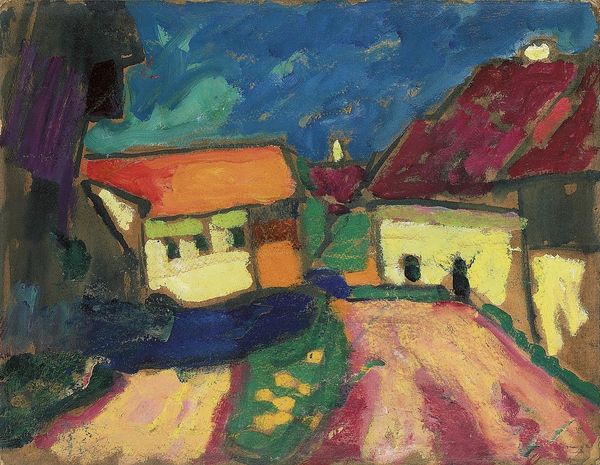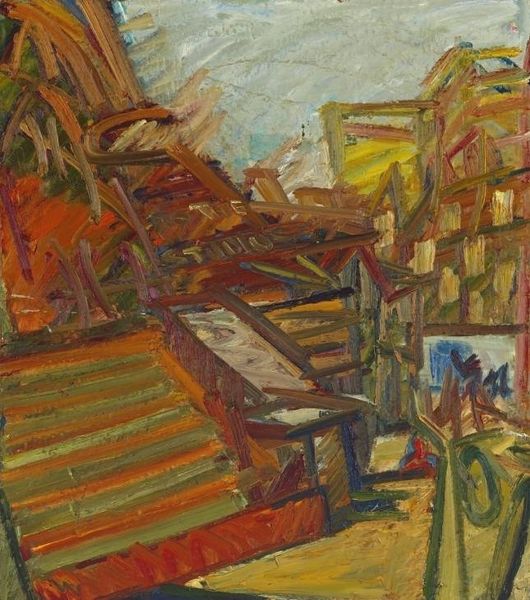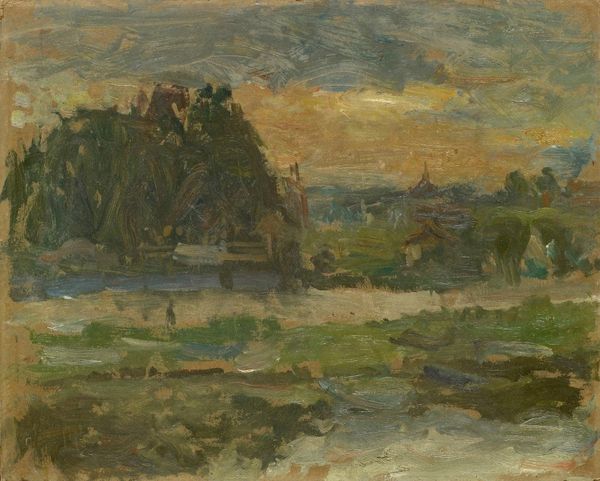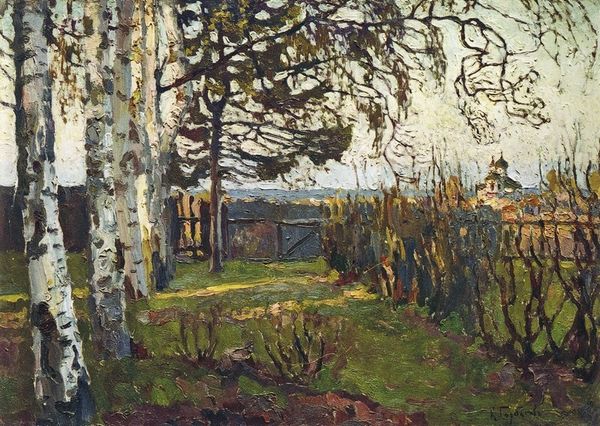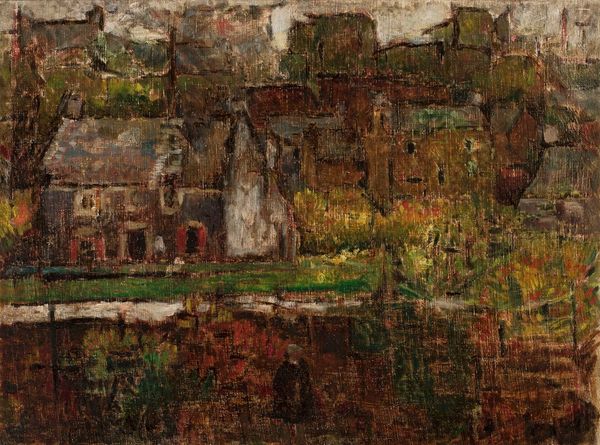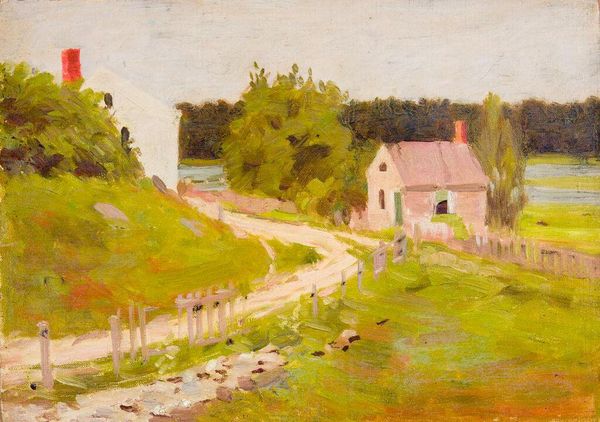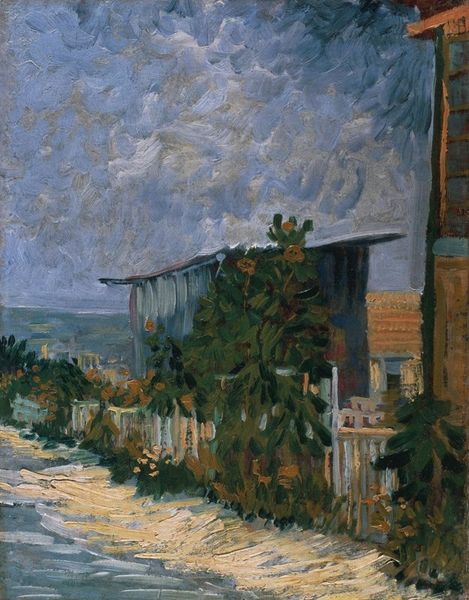
Copyright: Public domain
Isaac Levitan’s painting presents a landscape rendered with a visibly textured surface, composed of ochre, brown, and muted greens beneath a sunset sky. The scene is dominated by a village set atop a hill, the structures of its buildings echoing one another in a repetitive, almost rhythmic pattern. Levitan masterfully uses the formal elements of line and color to evoke a sense of place. Notice how the diagonal strokes that define the path leading up to the village create a dynamic movement, drawing your eye into the composition. The limited palette, primarily earthy tones, suggests a sense of melancholy, resonating with the Symbolist movement’s interest in expressing emotional states through nature. The rough brushstrokes and the almost crude rendering of the houses against the subtle gradations of the sky create a tension between the material reality of the paint and the atmospheric effect he’s trying to capture. The painting operates on a semiotic level, where the village, the path, and the setting sun act as signs. It’s important to recognize that while the scene might appear straightforward, Levitan is likely inviting a deeper contemplation of the human relationship with nature and the transience of life.
Comments
No comments
Be the first to comment and join the conversation on the ultimate creative platform.

